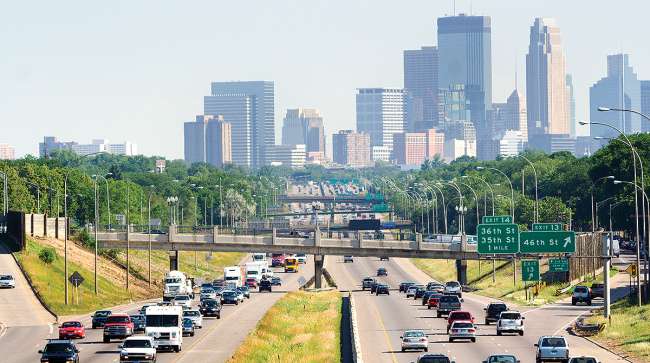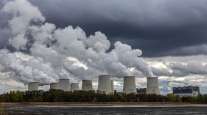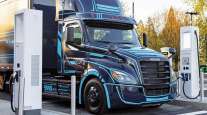Staff Reporter
Minnesota DOT Identifies Strategies for Decarbonization

[Stay on top of transportation news: Get TTNews in your inbox.]
The Minnesota Department of Transportation has released a report that provides recommendations for reducing greenhouse gas emissions across modes of surface transportation, including heavy trucks.
The report, titled “Pathways to Decarbonizing Transportation in Minnesota,” was released Sept. 18 and identifies transportation as the largest emitter of GHGs in the state.
Pathways Report 2019 by Transport Topics on Scribd
Chief Sustainability Officer Tim Sexton said that cars, trucks, buses and motorcycles account for about 70% of the state’s transportation-related emissions. Of that 70%, some 94% comes from cars and trucks. (The remaining 30% comes from heavy rail, pipeline, aviation and marine transport.)
Trucks, cars, buses, motorcycles and mobile air conditioning were the focus of MnDOT’s research project. Mobile air conditioning refers to air conditioning in cars and trucks.
MnDOT led a partnership among the state Environmental Quality Board, the Minnesota Pollution Control Agency and the state departments of Agriculture and Commerce to produce the report.
“Minnesotans are concerned about climate change and want to see meaningful action,” said Will Seuffert, executive director of the Minnesota Environmental Quality Board. “With the transportation sector now the largest source of greenhouse gas emissions in the state, this report lays an important foundation for advancing low-carbon transportation options.”
The team collected input through meetings, an online survey and a webinar. Generally, input indicated that more transportation options, such as electric vehicles and buses, more EV chargers, high-quality public transportation and safe walking and biking infrastructure, are needed. Participants also supported electrifying commercial and heavy-duty vehicles.
Appropriate infrastructure, such as charging stations, can be a challenge for cars and trucks that need to travel to places that lack charging sites. The report states that Minnesota will work with neighboring states to create an EV corridor to promote interoperability standards, share best practices and avoid redundancies in charging sites.

Sexton
Sexton, who also serves as spokesman for the report, acknowledged there is a need for more research on creating a charging station network.
“We realize there’s a gap there,” Sexton said. “You just need more and bigger chargers to charge a heavy truck because the batteries need to be bigger. They just have different power needs.”
The report outlines a few steps MnDOT will immediately take to help decarbonize transportation. According to the report, the agency will create the Sustainable Transportation Advisory Council, which will consist of representatives from state and local government agencies, nonprofit organizations and private sector groups, to advise on ways to reduce carbon pollution. Starting Jan. 1, MnDOT will analyze GHG emissions for construction and operations as part of the Minnesota Environmental Policy Act documentation for transportation projects.
The report also says Gov. Tim Walz should encourage the Minnesota Pollution Control Agency to develop a rulemaking for the state to adopt low-emission vehicle standards.
Another solution to reducing GHG emissions are biofuels, which the report recommends should be made more accessible for drivers. Participants called for more biofuel infrastructure, which can refer to pumps, tanks and blending equipment.
“We recognize there are differences in the needs between trucks and cars and also between the different types of freight movement,” Sexton said. “We hear from the public that we need to be considering the differences between urban and rural communities. We’re looking forward to working with those stakeholders in the future to figure out how we can help them in this transition.”
Minnesota passed the Next Generation Energy Act (NGEA) in 2007, which laid out goals for the state to reduce GHG emissions. Specifically, the objective was to reduce emissions by 15% below 2005 levels by 2015, 30% by 2025, and 80% by 2050. The report indicates that Minnesota did not meet the 2015 goal and is not on track to meet future goals.
WANT MORE NEWS? Listen to today's Daily Briefing
Although GHG emissions took a dip between 2005 and 2016 because of federal fuel-efficiency standards and the recession, the report indicates that emissions are on the rise. GHG emissions began to increase in 2015 and 2016 as vehicle miles traveled increased and people purchased more vehicles.




